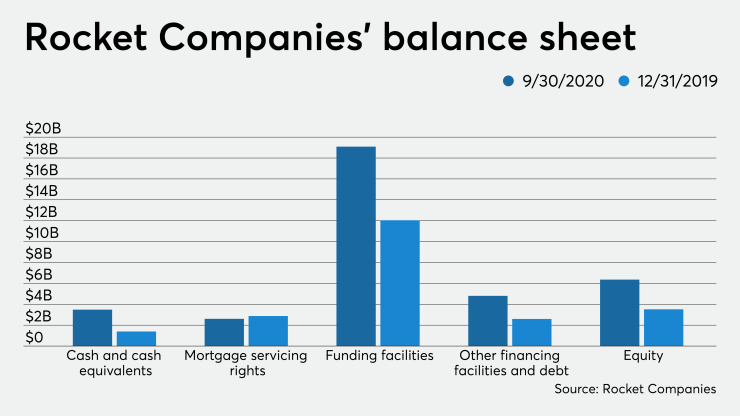A number of analysts have been speculating about whether the pending equity
The bad news is that the Federal Open Market Committee is
“In the third quarter, we delivered a record performance with $89 billion of closed loan volume, representing a 122% increase year-over-year,” Rocket CEO Jay Farner told investors. “The growth we're achieving, it’s unmatched in Q3. We added nearly $50 billion of year-over-year closed loan volume. Consider this, our incremental volume in the third quarter is so large it alone would have made us the second largest retail mortgage lender in the nation.”

During the monthly call to discuss the secondary market for MSRs, the folks at SitusAMC noted that the Fed has been purchasing Ginnie Mae and USB 1.5% coupon mortgage securities for the past several weeks. Since most lenders are still delivering new loans into pools with 2% or even 2.5% coupons, this suggests that many of these loans will prepay, again, in the next 12-24 months.
For mortgage lenders like Rocket, which brag of client retention rates of over 80%, high prepayment rates are a way to boost revenue and particularly gain-on-sale income. As we wrote back in September in National Mortgage News (“
“The only rational strategy for holding MSRs is to be very aggressive on protecting the servicing assets via loan recapture. This is one of the chief reasons that banks have been willing to give up their share in lending and servicing as they collapse back to retail-only lending strategies.”
When the markets in August saw
The fact is that IMBs such as Rocket,
But, of course, the FOMC is not the only problem for these investors. Back in October of 2019, Ginnie Mae 3% coupon MSRs were being capitalized at 5x annual cash flow or around 150 basis points (32 bps annually x 5). Today, those same Ginnie Mae 3% coupon MSRs are being capitalized at 3x annual cash flow — or 90 bps — and that level is still too high given visible prepayment speeds.
“Price multiples are too high relative to the current environment,” notes one of the most respected CIOs in the mortgage industry with respect to Ginnie Mae MSRs. “Risk has risen far faster than the risk-free rate has fallen. It is possible to lose MORE than one’s investment in a Ginnie Mae MSR.”
The mortgage banker tells NMN that expected default rates, particularly for low-FICO borrowers, are far below realistic levels. Mostly, he avers, MSR brokers don’t consider FICO scores in government loans and appear to assume a much higher quality borrower for FHA than actually exists.
Now, in theory, as MSRs with higher coupons and faster speeds prepay, the fair value of the remaining portfolio can actually go up over time as the portfolio is left with a larger percentage of lower coupon assets. At the same time, however, the actions by the FOMC and the increasingly competitive environment for loans is driving prepayments across the entire coupon spectrum.
For investors such as banks, REITs, central banks and investment funds, the prospect for continued high loan prepayment is a huge problem. Just as some investors are taking losses on MSRs that were purchased at 3 and 4 multiples a year ago, holders of government and agency MBS are experiencing negative net returns on their investments. That screaming you hear off in the distance is the Bank of Japan calling Fed Chairman Jerome Powell.
Various media outlets have attributed the delay in IPOs by mortgage firms as being
It does not take a genius to realize that the boom in mortgage lending is due to low interest rates and aggressive asset purchases by the FOMC. These purchases will continue to support record new loan volumes, but with declining profits and loan quality overall. And as and when new lending volumes start to recede, even with the FOMC’s actions, the shoals of credit and operational risk lurking just beneath the surface will emerge.
As all mortgage bankers know very well, eventually the good times do end.





